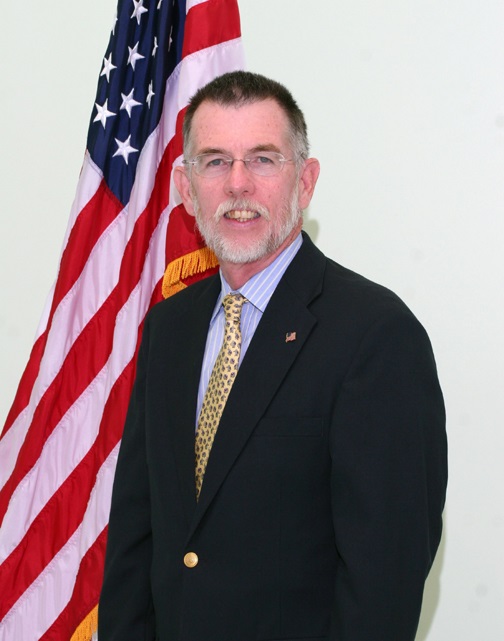 By Solomiia Narytnyk
By Solomiia Narytnyk
The United States faces ongoing labor shortages in healthcare, education, social services, and skilled trades. At the same time, thousands of refugees arrive every year with valuable skills and strong work ethics but struggle to access employment due to language barriers, lack of credential recognition, and limited industry connections.
For many of us, the journey to employment in the U.S. is filled with challenges. I still remember my first job interview in America—how nervous I was about my accent, unsure if my qualifications from Ukraine would mean anything, and afraid that my past experience would be overlooked. Like so many other refugees, I had to start from scratch, even though I had years of education and professional experience.
With a structured workforce integration approach, these challenges can be overcome, filling labor shortages while helping refugees achieve financial independence. Programs that provide career training, mentorship, and job placement support benefit immigrants and strengthen the U.S. economy by expanding the available workforce.
The Role of Workforce Integration Programs
Many refugees arrive in the U.S. highly skilled in healthcare, education, and engineering professions, yet they are often underemployed in low-wage jobs. Workforce development programs help bridge this gap by:
- Job training & career readiness – Teaching resume writing, interview preparation, and workplace expectations.
- Industry-specific certification support – Helping foreign-trained professionals qualify for U.S. jobs.
- Employer partnerships – Connecting companies with skilled refugee workers to fill job vacancies.
I experienced firsthand how critical these programs are. When I arrived in the U.S., I had degrees, but I lacked American work experience. A local refugee support center paired me with a career mentor who helped me revise my resume, practice job interviews, and understand the nuances of professional networking in the U.S. This guidance made all the difference—I went from working below my skill level to securing a job that aligned with my experience and aspirations.
My work at RefugeeOne has shown me how these programs change lives and ensure refugees have careers that benefit both their families and the economy.

Economic Benefits of Refugee Workforce Inclusion
Refugees provide skilled labor in industries struggling to recruit workers, filling labor shortages and increasing economic productivity.
- Boosting Tax Revenue – Employed refugees contribute to Social Security, Medicare, and local economies.
- Reducing Government Assistance Dependence – Workforce integration allows refugees to achieve financial stability, decreasing their reliance on public aid programs.
One of the biggest misconceptions is that refugees rely on government assistance indefinitely. The reality is that most of us want to work and become self-sufficient as soon as possible. I remember feeling an immense sense of relief when I received my first paycheck in the U.S. It wasn’t just about the money—it was about regaining my independence. Studies from the Fiscal Policy Institute and National Bureau of Economic Research show that, over time, refugees become net contributors to the economy through employment, taxes, and consumer spending.
Workforce Integration Success Stories
One refugee teenager I worked with arrived in the U.S. with limited English skills and no clear career path. Through career training and mentorship, he earned a scholarship in computer science, which set him up for success in a high-demand field.
Another refugee I met was a doctor in Ukraine, but in the U.S., he initially worked as a cashier. It was heartbreaking to see someone with such knowledge and experience unable to practice his profession. Through a workforce integration program, he enrolled in a credential evaluation service and obtained a U.S. medical certification. Today, he is a practicing physician again, serving communities in desperate need of healthcare professionals.
These are just two of many stories that demonstrate the transformative power of workforce integration programs. They are proof that refugees aren’t just looking for a handout—they’re looking for a way to contribute.

Building on Current Success and Future Actions
For workforce integration to be more effective, policymakers and employers should:
- Expand funding for job training, ESL programs, and credential evaluation services.
- Streamline credential recognition for foreign-trained professionals.
- Encourage employer participation by offering incentives for hiring refugees.
- Strengthen mentorship & internship programs for young refugees entering the job market.
A common frustration among refugee professionals is the lengthy and costly process of re-establishing credentials. I know doctors, engineers, and teachers who spent years in their fields abroad but have had to restart their careers from the bottom in the U.S. By simplifying the process of credential recognition, we can fill labor shortages in industries that urgently need skilled professionals.
Why Workforce Integration is a National Priority
Refugees don’t just seek safety—they seek opportunity. We come to the U.S. hoping to rebuild our lives and provide a better future for our families. When provided with the proper support, refugees become economically independent, strengthen industries facing labor shortages, and contribute to long-term economic stability.
I often think back to my first days in America—how uncertain everything felt, how daunting it was to navigate a new system, and how determined I was to find my place. Today, I know that I’m not alone. Refugees across the country are working hard to build new lives, and in doing so, they are helping build a stronger U.S. economy.
Investing in workforce integration is not just the right thing to do—it’s smart for America’s economy.







